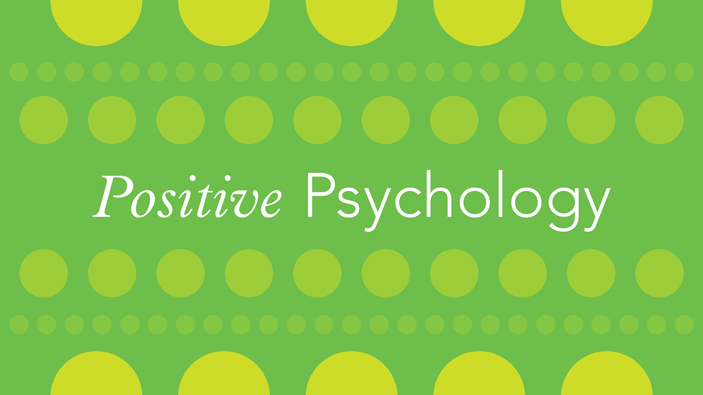When I was elected president of our Association, I was both humbled and challenged by what I saw as an opportunity to enlarge the scope of our discipline's work. For I believed then, and do still hold, that there are two areas in which psychology of the late 20th century has not played a large enough role in making the lives of people better.
One area that cries out for psychology's attention is the 20th century's shameful legacy of ethnic conflict. (Even as I write this piece, the world community is struggling with the plight of some half-million refugees from Kosovo.)
The second area cries out for what I call "positive psychology," that is, a reoriented science that emphasizes the understanding and building of the most positive qualities of an individual: optimism, courage, work ethic, future-mindedness, interpersonal skill, the capacity for pleasure and insight, and social responsibility. It's my belief that since the end of World War II, psychology has moved too far away from its original roots, which were to make the lives of all people more fulfilling and productive, and too much toward the important, but not all-important, area of curing mental illness.
With these two areas of need in mind—relieving ethnic conflict and making life more fulfilling—I created two presidential initiatives during my time in office, as described below.
Ethnopolitical Conflict
Certainly the goal of a more peaceful 21st century is as complex and as urgent as ever. To help psychology build an infrastructure that would allow future psychologists to play a role in preventing ethnic conflict and violence, I teamed with Canadian Psychological Association President Peter Suedfeld and created a joint APA/CPA Task Force on Ethnopolitical Warfare.
Dr. Suedfeld and I believe that with the death of fascism and the winding down of communism, the warfare the world faces in the next century will be ethnic in its roots and hatreds. In contemporary ethnopolitical conflicts, as in Kosovo right now, civilian populations are the primary targets of terror. The destruction of whole communities and the ongoing problems of refugees and human rights abuse amplify the problems.
What can psychology do? I submit to you that we can train today's young psychologists who have the courage and the humanity for such work to better understand, predict, and even prevent such tragedies. When the worst does occur, we can train psychologists to help pick up the pieces by helping people and communities heal and learn to live and trust together again.
The first step in creating a scholarly understanding of ethnic conflict was taken at an APA/CPA conference on the subject at the University of Ulster in Derry/Londonderry, Northern Ireland, in June.
The meeting, chaired by Dan Chirot of the University of Washington, brought together 30 of the world's most distinguished specialists not just from psychology but from many disciplines, for example, from the fields of history, ethnic conflicts, human rights, and conflict resolution. Among the questions discussed were the following: What do we know about the roots of ethnopolitical violence? Why do some potentially violent situations result in violence while others do not? How does a society resolve group conflict relatively peacefully, as in the case of a South Africa, while others are solved with mass murder or forced migration?
Clearly, these are difficult questions, and the answers need to come from many disciplines. But to set the stage, three universities are taking the lead in creating a pioneering postdoctoral fellowship program combining both scholarship and field work in the scientist-practitioner model to study ethnopolitical conflict. The first entering class is that of June 1999. Classes will take place on three campuses—at the University of Pennsylvania, the University of Cape Town in South Africa, and the University of Ulster in Northern Ireland. The Mellon Foundation, the National Institute of Mental Health, and private donors have already pledged over $2 million to this initiative.
A NewScience ofHumanStrengths
Entering a new millennium, we face a historical choice.Standing alone on the pinnacle of economic and political leadership, the United States can continue to increase its material wealth while ignoring the human needs of our people and of the people on the rest of the planet. Such a course is likely to lead to increasing selfishness, alienation between the more and the less fortunate, and eventually to chaos and despair.
At this juncture, psychology can play an enormously important role. We can articulate a vision of the good life that is empirically sound and, at the same time, understandableand attractive. We can show the world what actions lead to well-being, to positive individuals, to flourishing communities, and to a just society.
Ideally, psychology should be able to help document what kind of families result in the healthiest children, what work environments support the greatest satisfaction among workers, and what policies result in the strongest civic commitment.
Yet we have scant knowledge of what makes life worth living. For although psychology has come to understand quite a bit about how people survive and endure under conditions of adversity, we know very little about how normal people flourish under more benign conditions.
This is because since World War II, psychology has become a science largely about healing. It concentrates on repairing damage within a disease model of human functioning. Such almost exclusive attention to pathology neglects the flourishing individual and the thrivingcommunity. True, our emphasis on assessing and healingdamage has been important and had its important victories. By my count, we now understand and can effectively treat at least 14 mental disorders that we could not treat 50 years ago. But these victories have come at a considerable cost. When we became solely a healing profession, we forgot our larger mission: that of making the lives of all people better.In this time of unprecedented prosperity, our children can look forward to more buying power, more education, more technology, and more choices than ever before. If it were indeed true that depression is caused by bad events, then Americans today, especially young Americans, should be a very happy group. But the reality is that a sea change has taken place in the mental health of young Americans over the last 40 years. The most recent data show that there is more than 10 times as much serious depression now as 4 decades ago. Worse, depression is now a disorder of the early teenage years rather than a disorder that starts in middle age, a situation that comprises the single largest change in the modern demographics of mental illness. And that, I believe, is the major paradox of the late 20th century.
Why? In searching for the answer, I look not toward the lessons of remedial psychology with its emphasis on repairing damage. Instead, I look to a new social and behavioral science that seeks to understand and nurture those human strengths that can prevent the tragedy of mental illness. For it is my belief that no medication or technique of therapy holds as much promise for serving as a buffer against mental illness as does human strength. But psychology's focus on the negative has left us knowing too little about the many instances of growth, mastery, drive, and character building that can develop out of painful life events.
So my second presidential initiative is intended to begin building an infrastructure within the discipline and funding it from outside to encourage and foster the growth of the new science and profession of positive psychology.
Our mission is to utilize quality scientific research and scholarship to reorient our science and practice toward human strength. In this way, we can learn to identify and understand the traits and underpinnings of preventive psychological health and, most importantly, learn how to foster such traits in young people.Supporting the research and vision of tomorrow’s positive psychology leaders will be an important part of building the foundation of this new science. Toward this end, a number of projects are under way.
With generous support from the John Templeton Foundation, APA has created the Templeton Positive Psychology Prize. Awarded annually, it will recognize and encourage the work of mid-career researchers working in the realm of positive psychology. When it is bestowed for the first time in February 2000, the Templeton Prize will become the largest monetary award ever given in psychology.
In addition, a "junior scientists" network of 18 early and mid-career researchers all working in issue areas related to positive psychology has also been created. The network grew out of 6 days of conversation and brainstorming led by Mihalyi Csikszentmihalyi, Don Clifton, Raymond Fowler, and myself. This meeting was an unparalleled success. The typical evaluation was "the best intellectual experience of my career." Now these 18 young scientists will continue to collaborate both electronically and face to face. My expectation is that they will be the leaders of our reoriented science in decades to come.
In 1998, two groups of more senior scholars also met and began work on the taxonomy of the roots of a positive life. One group is asking, "What are the characteristics of a positive life, and how can they be measured and taught? What are the relationships among subjective well-being, positive individual traits, and positive community?"
The other group seeks to transform the study of genius and extraordinary accomplishments. They commend to our science the idea that human greatness occurs not only in the realm of achievement, but that genius can also come into play in mastering human relationships, assuming moral responsibility, engaging in spirituality, and viewing life as a work of art. This Truly Extraordinary People group intends to pioneer such studies.
The creation of a new science of positive psychology can be the "Manhattan Project" for the social sciences. It will require substantial resources but it does hold unprecedented promise. The medical model often talks about medical cost offset; and, indeed, cost offset is important. But I suggest there's another cost offset to consider: one for the individual and for the community.
Positive psychology should not only have as a useful side effect the prevention of serious mental illness, but it also holds the potential to create, as a direct effect, an understanding and a scientifically informed practice of the pursuit of the best things in life and of family and civic virtue.
I have often been asked what was my reason, deep down, for running for president of APA. I will tell you now. It was because I thought I had a mission but did not know what it was.I thought that in serving as president, I would discover my mission. And I did.
That mission is to partake in launching a science and a profession whose aim is the building of what makes life most worth living. This opportunity was your gift to me, and my fondest hope is that the two initiatives I have discussed above and gone on to launch will repay your trust.
In closing, I now want to make explicit the underlying theme of my presidency: Psychology is not merely a branch of the health care system. It is not just an extension of medicine. And it is surely more than a tenant farmer on the plantation of profit-motivated health schemes. Our mission is much larger.
We have misplaced our original and greater mandate to make life better for all people, not just the mentally ill. I therefore call on our profession and our science to take up this mandate once again as we enter the next millennium.
Read More







